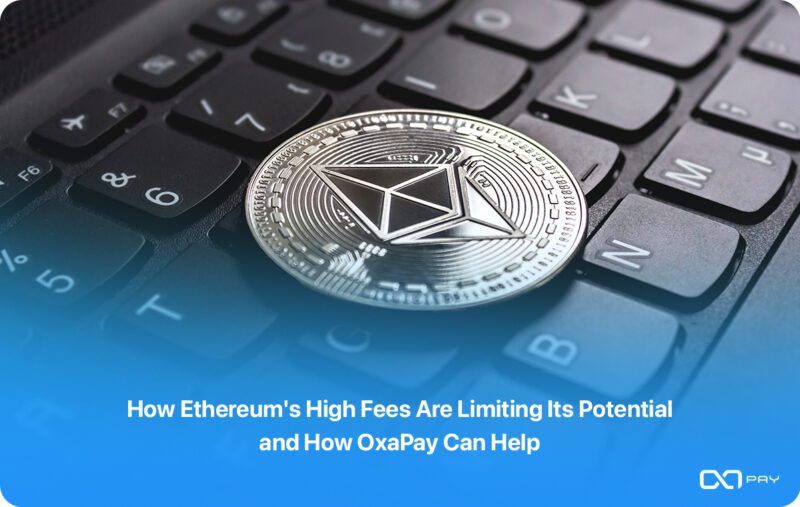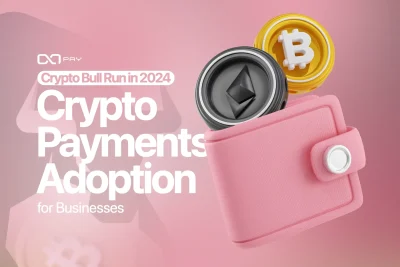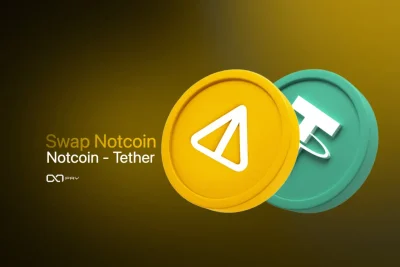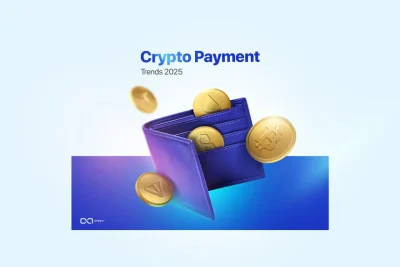The rise of Ethereum as a leading cryptocurrency has been accompanied by a significant challenge: increasing transaction fees. Ethereum’s widespread success and adoption have led to it becoming a key player in the digital currency world, but this has also resulted in higher fees, posing a barrier for users who wish to conduct Ethereum transactions without incurring substantial costs. To address this issue, Addressing this, OxaPay offers a solution to reduce these costs, making Ethereum token transfers more affordable and practical for both businesses and everyday users.
Understanding Ethereum’s Fee Structure: Gas Fees and Gas Limits
Ethereum’s Fee Mechanism
To understand the high transaction fees associated with Ethereum, it’s essential to delve into its fee mechanism, particularly the concepts of ‘gas fees‘ and ‘gas limits.’
What is Gas?
Gas in Ethereum is a unit that measures the computational work of conducting transactions or smart contracts in the Ethereum network. Think of it as the “fuel” needed for the execution of operations on the blockchain.
Gas Fees Explained
Ethereum’s fees, known as gas fees, are not fixed; they fluctuate based on network congestion. When the network gets highly congested, users often end up paying much more. This happens because users need to bid higher than others to get their transactions processed quickly, leading to a competitive and costly environment.
The gas fee for a transaction is calculated as:
Gas Fee = Gas Units × Gas Price per Unit
Gas Units: This is the quantity of gas required to perform a transaction. Simple transactions like sending ETH require less gas, while complex ones, such as interacting with a smart contract, need more.
Gas Price per Unit: Users can bid a certain amount of Gwei for every unit of gas. Miners typically prioritize transactions with higher gas prices, leading to faster processing times.
Gas Limits
In Ethereum transactions, a ‘gas limit’ sets the maximum amount of gas a user will spend. By choosing a higher gas limit, users ensure complex transactions complete. However, setting the limit too low can lead to transaction failure, and the user loses the gas already spent, as it’s not refundable.
Dynamic Nature of Gas Fees
Ethereum’s gas fees are dynamic. They fluctuate based on network demand and the amount of data processed in a transaction. During periods of high demand, gas fees can soar as users bid higher to get their transactions processed faster.
Challenges with High Gas Fees
For everyday users, these fluctuating and sometimes exorbitant fees can be a significant hindrance, especially for smaller transactions. High gas fees can make routine transactions impractical, limiting Ethereum’s broader usability.
Ethereum’s High Fee Conundrum: Navigating the Complexity
The Challenge of Rising Transaction Fees
As Ethereum has cemented its position as a leading cryptocurrency, it’s been met with a significant challenge: escalating transaction fees. These fees, while indicative of the network’s success and widespread adoption, have simultaneously erected barriers for many users.
Gas Fees: The Core of the Issue
Ethereum’s ‘gas fees’ compensate for the computational work of transactions and smart contracts. Denominated in ‘Gwei,’ a fraction of Ethereum, they depend on the computational effort and network demand.
The Impact of Network Congestion
In Ethereum, the fees, which vary with network congestion, are not fixed. Users tend to pay more when the network faces high traffic. This higher cost results from the need for users to bid more than others to have their transactions processed quickly, creating a competitive and expensive situation.
Small Transactions Bear the Brunt
Large transactions handle fees better, but smaller ones, like simple transfers or smart contract interactions, struggle, especially during busy times. This makes Ethereum less viable for daily use and limits its inclusivity as a financial platform.
The Dilemma for Average Users
Users, especially those with small transactions, face high fees that can exceed the transaction’s value or must avoid using Ethereum for these transfers. This fee issue hinders Ethereum’s aim for broad blockchain adoption.
OxaPay Solution for Businesses
Addressing the Needs of Businesses in Ethereum Transactions
OxaPay steps forward as a game-changer for businesses deeply engaged in Ethereum transactions. Recognizing the unique challenges faced by businesses in managing large-scale Ethereum transfers, OxaPay has tailored a solution specifically designed to meet these demands.
Zero-Cost Internal Transfers on OxaPay Platform
At the core of OxaPay’s offering is the ability for businesses to conduct internal transfers on the OxaPay platform. This feature is especially advantageous for businesses that need to transfer Ethereum in significant volumes and of any size. Whether it’s frequent small transactions or occasional large-scale transfers, OxaPay ensures that these can be done at zero cost. This internal transfer system is a critical tool for businesses looking to streamline their operations and reduce overhead costs associated with Ethereum transactions.
Empowering Businesses
Businesses utilizing OxaPay can significantly benefit their customers by introducing them to OxaPay’s crypto payment gateway, a platform that offers a secure and user-friendly wallet for managing crypto-assets. This gateway allows businesses to conduct zero-cost transfers of any cryptocurrency directly to their customers’ OxaPay accounts. This initiative not only simplifies the transaction process for customers but also enhances business efficiency, fostering a mutually beneficial relationship in the cryptocurrency ecosystem.
Telegram Wallet: A User-Friendly Asset Management Tool
Taking user experience and security into high consideration, OxaPay has innovated by creating a Telegram wallet. This wallet stands out for its high security and ease of use, allowing customers of businesses to manage their assets conveniently on the Telegram platform. The integration of asset management into a widely used communication tool like Telegram simplifies the process for users, making it accessible even to those who are new to the world of cryptocurrency.
Conclusion
Ethereum’s ascent in the cryptocurrency realm has been tempered by its high transaction fees, posing challenges for regular and small-scale users. OxaPay’s innovative approach offers a vital solution by enabling zero-cost internal transfers, particularly beneficial for businesses with high Ethereum transaction volumes. This initiative not only streamlines operations for businesses but also extends its advantages to their customers, enhancing the overall Ethereum transaction experience. By reducing the cost barrier and integrating user-friendly tools like the Telegram wallet, OxaPay is making Ethereum more accessible and practical for a wider audience, thereby bolstering its potential in the digital currency landscape.






